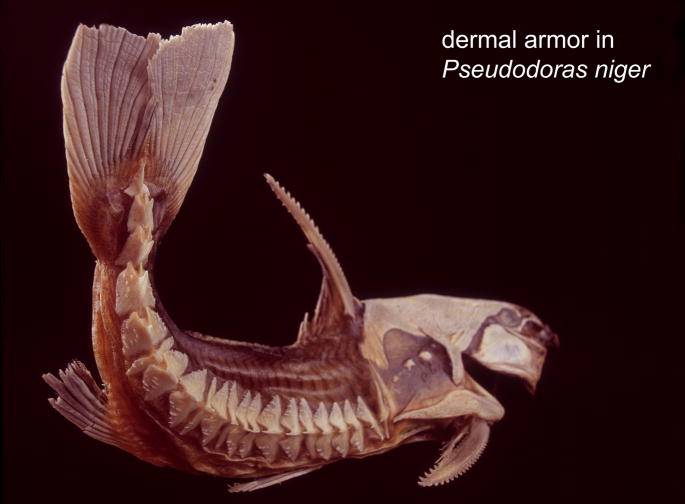Figure 5.
The evolutionary forces behind the multitude of shapes and forms among the dermal teeth in catfishes of the genus Doras were the focus of a heated debate over the role of variation and function in the evolution of organisms between Otto Aichel (1871–1935) of Kiel and Harry Sicher of Vienna. As primary causes behind the evolution of skeletal features, Aichel favored the natural variability of forms and shapes while Sicher advocated the “form follows function” concept, echoing generations of Viennese functional anatomy tradition as well as holistic concepts of heredity. Catfishes display a wealth of dermal armor, as depicted here in the multitude of tooth-like structures on the skin and fins of the Giant Clawed Catfish (Pseudodoras niger = Turushuqui). Aichel’s and Sicher’s argument was about the evolutionary mechanisms that might have lead to the formation of such highly refined structures that defy any functional explanation at first sight.

